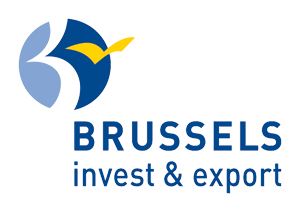Ukraine: On the verge of civil war
By Edoardo Camilli, Independent consultant
21 February 2014

Thursday, February 20, 2014, will certainly be remembered as one the bloodiest day in Ukraine’s most recent history. The final death toll of this week’s clashes between protesters and governmental forces is still uncertain, although early estimates refer that more than 100 people were killed and more than 500 were wounded. What happened in Independence Square was something completely far away for the peaceful “Orange Revolution” of few years ago. Indeed, the violent clashes between the opposing parties resembled more and more to the early stage of a civil war. Amateur video footages showing protesters shot dead by snipers went viral on the web and social media, while media reports about protesters’ attempts to seize weapons from policemen and barracks clearly indicate that the escalation is reaching a new breaking point.
Early this week, 1,189 weapons were seized by protesters following attacks against police stations in Lviv, the second city after Kiev at the flashpoint of the ongoing protests. Although half of them were later recovered, the other half is still in the hands of protesters, which means major attacks against security forces could be expected in coming days. The anti-riot police “Berkut” is likely to be become the principal target of armed attacks. In fact, Berkut is believed to be responsible for a long series of human right abuses against protesters in past weeks, as reported by international human rights organizations. In addition, Berkut might be behind the sniper attacks in Independence Square that caused the huge number of victims reported above.
Indeed, on February 20, Russian media reported that Berkut’s headquarter in Lviv suffered an arson attack, which caused an explosion that resulted in the alleged death of two people, according to a statement of the Ministry of Interior. Consequently, Lviv authorities have decided to set up self-defense units at the Berkut’s regional base in Lviv. On the other hand, recent news refers about groups of policemen from Lviv and other cities joining the ranks of the opposition to protect the population.
The Ukrainian government seems quite determined in ending the protests by using “all the necessary means”, including authorizing police and Berkut to use live bullets against protesters. Indications of more violent crackdowns to come are given by the order received by the pro-government movement “Ukrainian Front” to withdraw from Kiev and go back to Kharkiv, probably to avoid casualties caused by “friendly fire”.
On the political and diplomatic levels, attempt to restore normal security conditions have been made. In this regard, during an emergency session on February 20 the Ukrainian parliament voted a resolution that obliges the law enforcement to stop using firearms against protesters, to withdraw from central Kiev, to stop blocking roadways and to release prisoners. Even if ratified by the Parliament speaker, it will remain to be seen whether these measures will be effective to restore peace.
Meanwhile, President Vicktor Yanukovich, opposition leaders, European Union and Russian representatives are seeking to negotiate a truce. The EU has sent a delegation made by the Polish, the German and the French foreign ministers. It is quite surprising that the High Representative Catherine Ashton is not leading the delegation, instead of sending three ministers who represent different national interests. This might symbolize the lack of a unified strategy vis-a-vis the Ukrainian crisis among EU member states. The Polish delegation is strongly lobbying for a strong EU support to the opposition, while Germany is seeking to find a compromise to stop violence without challenging Russian interests too openly. In this context, French Foreign Minister, Laurent Fabius, was probably invited to join the delegation in order to mediate between the Polish and the German positions.
Despite EU internal divisions, the delegation has been able to propose a roadmap for ending the crisis. The three-step plan includes: the establishment of an interim government, the reform of the Constitution and the call for early presidential and parliamentary elections. The parties are currently discussing on the terms of the proposed plan. President Yanukovich has accepted to hold elections. The matter still dividing the President from the opposition is about when such elections should take place. While the opposition demands to call them in coming months, Yanukovich prefers to hold them at the end of the year in order to gain some extra time.
In all this, Russia’s interests have still to be taken into account. It is quite unlikely, in fact, that Russia will support the call for early elections to replace a democratically elected leader due to anti-governmental protests. This would represent a suicide precedent for President Putin that could encourage Russian opposition movements to take the streets.
It is quite evident that Russia cannot afford to lose Ukraine. Letting Ukraine going toward the European integrations would mean losing strategic economic and energy interests. In addition, it might encourage other States within Moscow’s sphere of influence to follow the Ukrainian path.
Therefore, Russia is currently playing to maintain a stalemate, during which Putin can seek a favorable compromise by working on bilateral diplomacy with Kiev and Berlin. In Russia’s eye, Yanukovich could be replaced with a more moderate leader, who will still represent Russian interests but at the same time pleasing some European ones. Another scenario that we cannot rule out sees Ukraine split in two administrative regions with the pro-European opposition leading the western part, leaving the eastern one to the pro-Russians. The recent call for Russia’s intervention by some members of the Crimean Parliament might be a clear indicator of this trend.
Nevertheless, despite an agreement on the roadmap map could be reached, violence in the streets is doomed to last, as the far right opposition, the Right Sector, will seek to boycott any agreement that does not envisage a pure nationalist agenda, far from any interference coming from either Moscow or Brussels.
© ESISC 2013
